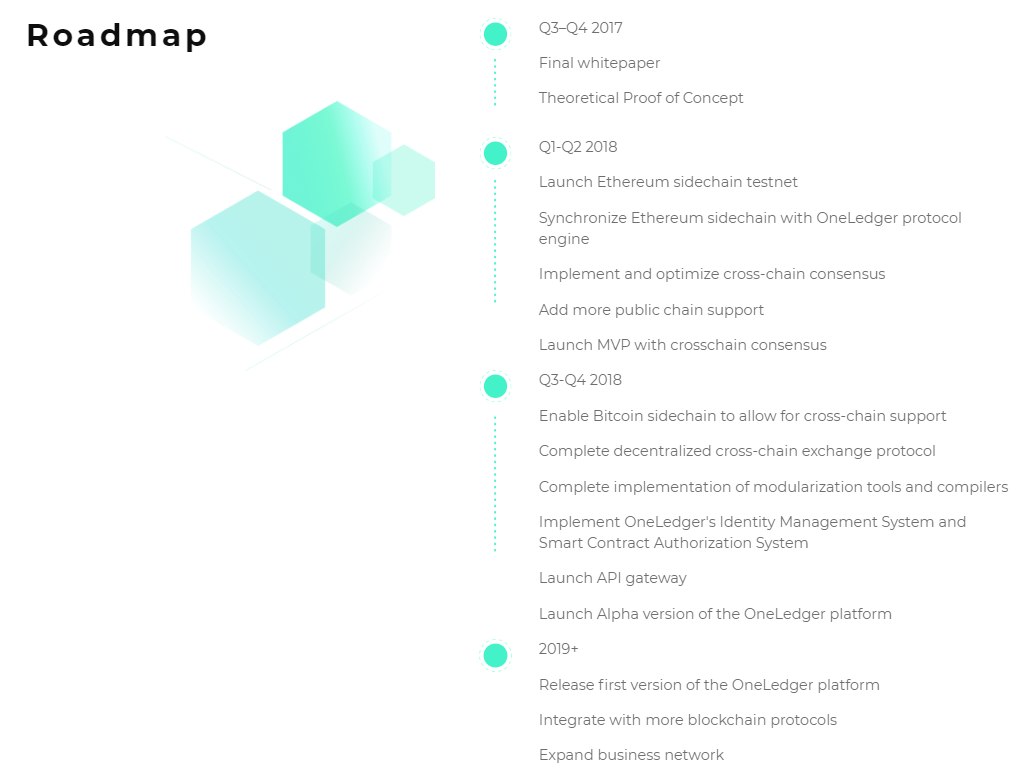OneLedger (OLT) Review – Blockchain Interoperability for the Enterprise
| Coin Name | OneLedger |
| Coin Ticker | OLT |
| Token Type | ERC20 |
| Total Tokens | 1,000,000,000 |
| Website URL | https://oneledger.io/ |
| White Paper URL | https://oneledger.io/wp-content/uploads/2018/06/oneledger-whitepaper-06.01.18.pdf |
One Ledger’s mission is to make it easier for businesses to adopt blockchain technology and integrate it into their applications and products. It aims to do this with its platform that enables both businesses and individuals to develop both public and private blockchains with uniquely-identified network consensus. It also provides a way to connect different blockchains so that users can choose from the best of what each blockchain has to offer.
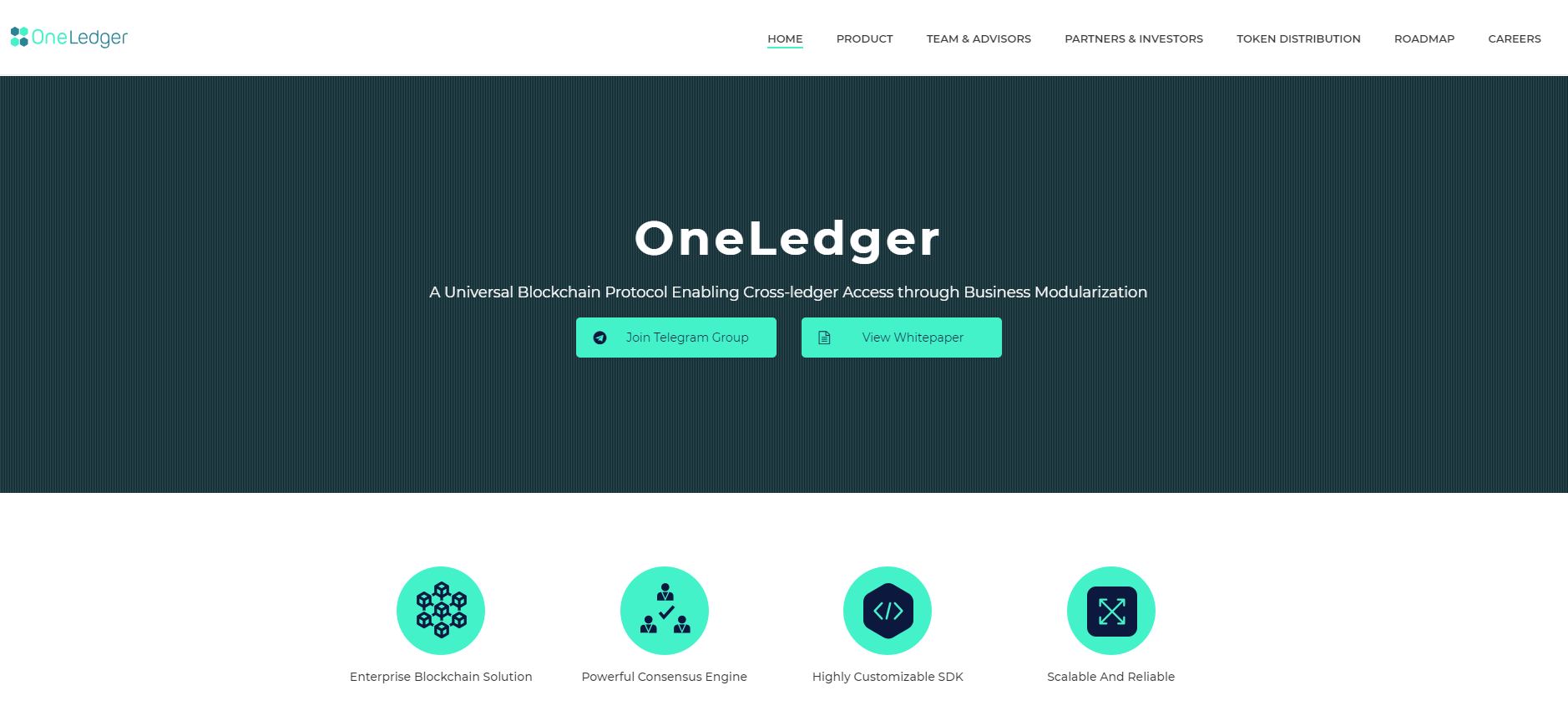
The Idea and the Team Behind Mainframe
Interoperability, or the inability of different blockchains to community with one another, is one of the biggest challenges in the blockchain ecosystem. Users can’t use different blockchains for the different advantages each has to offer but are instead limited to using only one blockchain for all of their needs.

OneLedger’s team is led by David Cao, the founder and CEO. Previously, David worked on the development of DB2 database and WebSphere Commerce core engine at IBM. He has helped many large enterprises grow exponentially with his expertise in supply chain, payments, ecommerce and J2EE enterprise architecture.
Alex Todd is OneLedger’s Chief Technology Adviser as well as the founder and CEO of Trust 2 Pay, a blockchain-enabled social credit rating system. Before OneLedger, Alex was CTO of PRESTO, an electronic fare system.
The Mainframe Technology
The main advantage of OneLedger is its interoperability with other blockchains. OneLedger combines public key infrastructure (PKI) with identity management so that nodes can participate in consensus of OneLedger and other sidechains. The OneLedger sidechains can be synched with other networks like Ethereum or Bitcoin. It also supports deposits of any cryptocurrency that has hashed time lock contracts (HTLC).
In addition, role control combined with PKI allows enterprises to create their own permissioned sidechain. Node operators participating on the sidechain will have specific roles defined by the business. Using OneLedger’s technology, enterprises can develop their own applications and launch them across multiple infrastructure networks that they desire.
The OLT Tokens
The OLT tokens will be equal to a ERC20 token so that they can be used on both the Ethereum ecosystme as well as the OneLedger ecosystem as the latter is being built.
There are three types of participants in the OneLedger token economics: users, network supporters (nodes) and developers.
Users — Users pay a network fee to nodes to use services on the OneLedger platform. They either acquire OLT tokens from other token holders, or run a node themselves to acquire tokens. User pay OLT tokens to use services in the marketplace.
Network Supporters — Network supporters receive OLT tokens as network fees. OneLedger’s software in the early phase allows everyone to run a node. Later on, staking amounts of tokens will be required to assume quality and commitment.
Developers — Developers, whether individuals, enterprise members or consulting firms need OLT toeksn to deploy modules on the OneLedger platform. They submit modules using a smart contract. These could be free services, or payment to developers a one-time fee to unlock the service, or a subscription model in exchange for payment of a monthly number of OLT tokens.
The token distribution is as follows:
- 10% – Company Reserve
- 15%- Marketing and Long-term Partners
- 35% – Sale Distribution
- 25% – Community Reserve
- 15% – Team and Advisors
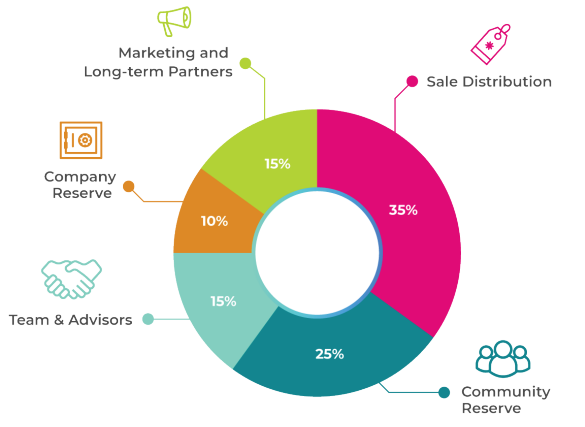
The OneLedger Network
The OneLedger platform includes a business center, a consensus protocol and sidechains.
Business Center
The business center will enables users to map their business module onto the blockchain, even providing suggestions of solutions for particular business flows. For example, a shopping plugin on OneLedger could be split into multiple components, a catalog, cart, order submission, shipping, payment, etc. These different modules can be built by different developers and later integrated together to create a customized shopping flow plugin.
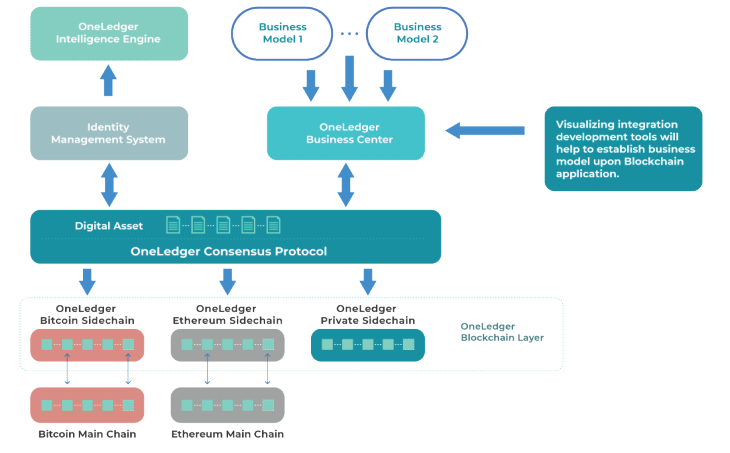
Consensus Protocol
The Consensus Protocol includes three separate layers: Business Initialization, Channel Consensus, and Public Chain Consensus.
- Business Initialization – A contract is drawn up to define the roles of the different parties in the business. The contract is general but generated to a contract recognizable and executable for different blockchains (like Bitcoin and Ethereum). The generated contract is then deployed with a proper method for nodes within OneLedger. For example, in Ethereum nodes, contacts are executed in the form of a smart contract, while in Bitcoin nodes, the contract is copied from the genesis contract upon creation of the nodes.
- Channel Consensus – Interactions between different roles are executed. Recording actions of new data is done through sidechain consensus. Sidechain consensus requires all participants to vote and 2/3 agreement among the voters. When there are two different business models in the sidechains, consensus is achieved by counting votes of participants of each model. After consensus is achieved, the block data is broadcast to all nodes in this channel and stored.
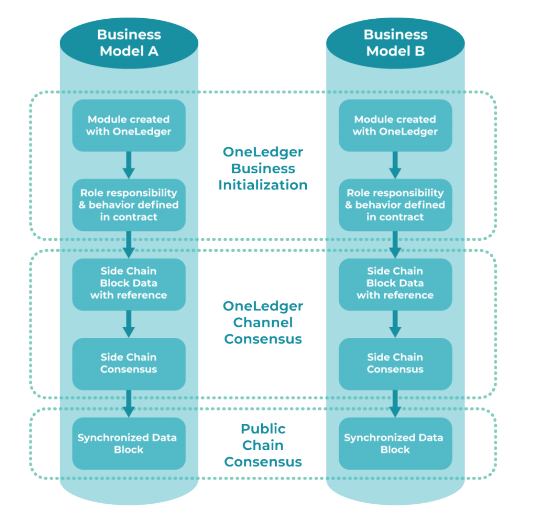
- Public Chain Consensus – OneLedger’s sidechain consensus is instrumental in helping initiate transfer between public chains. Pre-consensus steps are conducted in the OneLedger sidechain. This includes driving a proposal to the public chain and having it voted on by validators to have the lock or unlock action validated. Actions are finalized in OneLedger after 2/3 consensus.
Sidechains
OneLedger’s sidechain technology moves consensus traffic from the main chain with public consensus to the side chain. Sidechains are basically solutions that offloaded consensus to a sidechain. The sidechain, which can be private or public, inherits all the properties of the OneLedger protocol. The main advantages of sidechain technology are: low commissions, no need for confirmation, and as a result of each – instant payments.
The ICO and Roadmap
OneLedger’s goal is to raise $15 million in its ICO. It has already raised $10 million in its pre-sale.
By the end of 2018, it plans to enable Bitcoin cross-chain support and have a fully decentralized cross-chain exchange protocol. Further into the future, it plans to release the first version of the OneLedger platform and integrate with more blockchain protocols.
